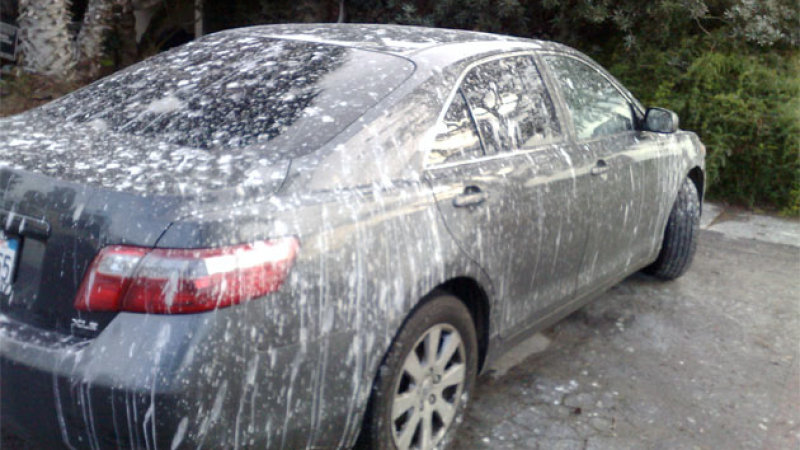Why Bird Poop is White
Every once in a while, a bird will poop on you. If it does, you’ll quickly learn two things. First, you’ll learn that in some cultures, having a bird drop its business on you is considered lucky — inevitably, there’s someone who will inform you of that “fact.” (There’s a lot of evidence that it isn’t lucky at all, with Exhibit A being that you just got pooped on by a wild animal. But, as an aside, NBA star Dwyane Wade is a believer.) And second, you’ll find out — if you didn’t know it already — that bird poop is white. Or, at least, has a lot of white in it.
But no need to experience this not-actually-lucky event. Bird poop is pretty easy to come by, and cars and statues seem to get the brunt of their efforts. (“Seems,” as another aside, is probably the operative word there — there’s little reason to think birds think about where their droppings are going to end up.) As a result, we’ve all probably seen bird poop in our lives. But just in case, here’s a picture of, well, a lot of it (via Autoblog):

See? White.
Well, mostly white. Take a closer look at one … blot? Let’s go with blot. Take a closer look at one blot of bird poop — click here if you need a visual aid — and you’ll see it’s more accurately described as brownish-yellowish lumps surrounded by a liquidy white splatter. The reason for this mix?
Birds poop, obviously. But they don’t pee.
Well, not the way we do.
When mammals urinate, we expel nitrogen-rich waste like urea. Birds don’t do that, though, so the nitrogenic waste has to find another way out. That’s what the white stuff in the bird poop blot is made of — it’s uric acid, which according to the Royal Society for the Protection of Birds, is “the bird equivalent to human’s urine.” In effect, birds do all of their waste expelling in one fell swoop — and what we think of as bird poop is probably better articulated as both poop and pee, just combined. The white part is the pee, the chunky brownish-yellow parts are the poop. The white is also why bird poop sticks to our car windows for much longer than one would otherwise expect; as the Audubon Society explains, “uric acid doesn’t dissolve in water easily, hence its ability to stick to your windshield like blobs of white plaster.” (Why it’s white but not, say, yellow, has to do with how birds process waste without losing too much water, per the RSPB.)
But why not pee and poop separately? Basically, it’s because they only have one way for waste to exit, called the cloaca, and both the intestinal tract and urinary tract lead there. As both types of waste exit through the same door, the evacuation happens at the same time. And as Mental Floss explains, while the two meet, they don’t mix: “because the acid and poop are expelled at the same time from the same opening, but from two different bodily systems, they don’t have much time to blend, and you get a bird dropping with two distinct parts that looks like a poor man’s Rorschach test.”
And no, there’s no luck mixed in, either.
Bonus fact: Next time you pee, time yourself. (Unless you’ve had a lot of coffee or water or whatever — in that case, wait for a more normal one.) If it comes to about 21 seconds, you’re not alone. In 2015, a team of researchers from Georgia Tech timed how long it took for different animals to take a tinkle. What they found was that, across the board, mammals which weigh 3 kg (about 6.6 pounds) or more — elephants, goats, and yes, humans — take about that long to empty their bladders. (Smaller mammals go much faster.)
From the Archives: How Bird Poop Shaped Our Maps: Because of all that nitrogen, bird poop makes for good fertilizer. And that led to a weird race to claim it.
